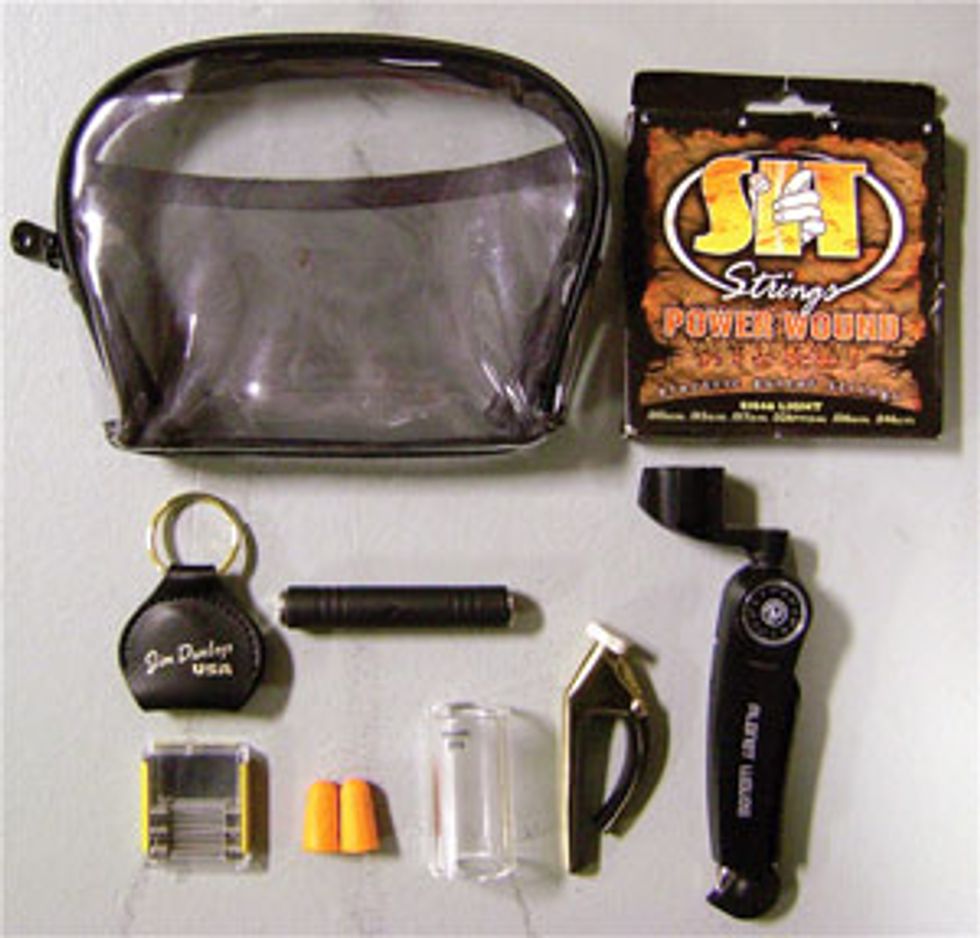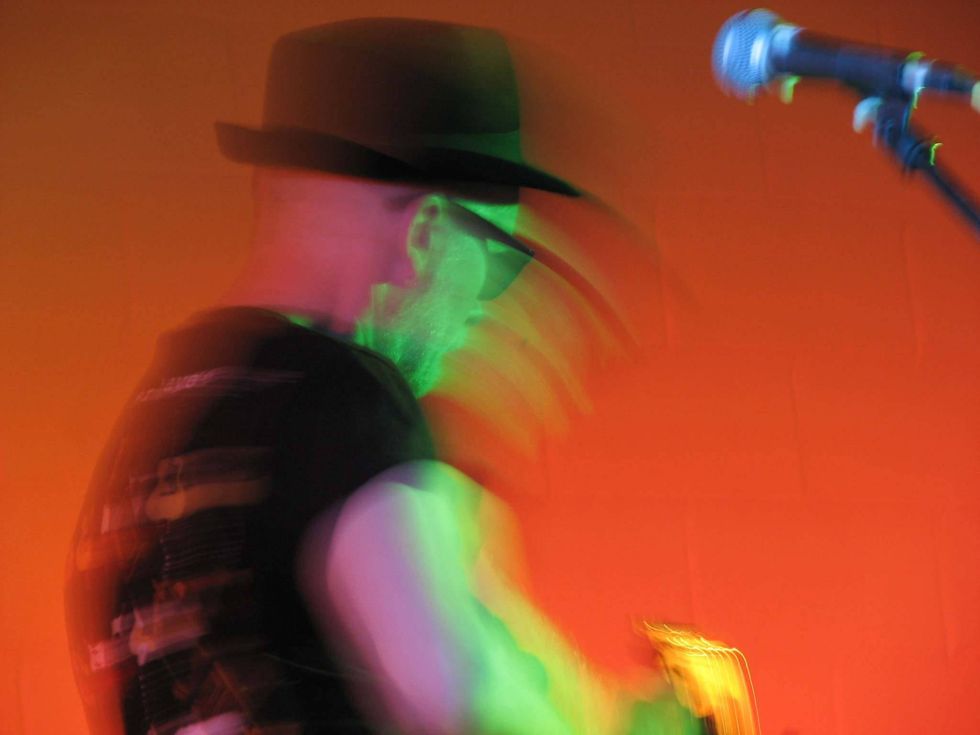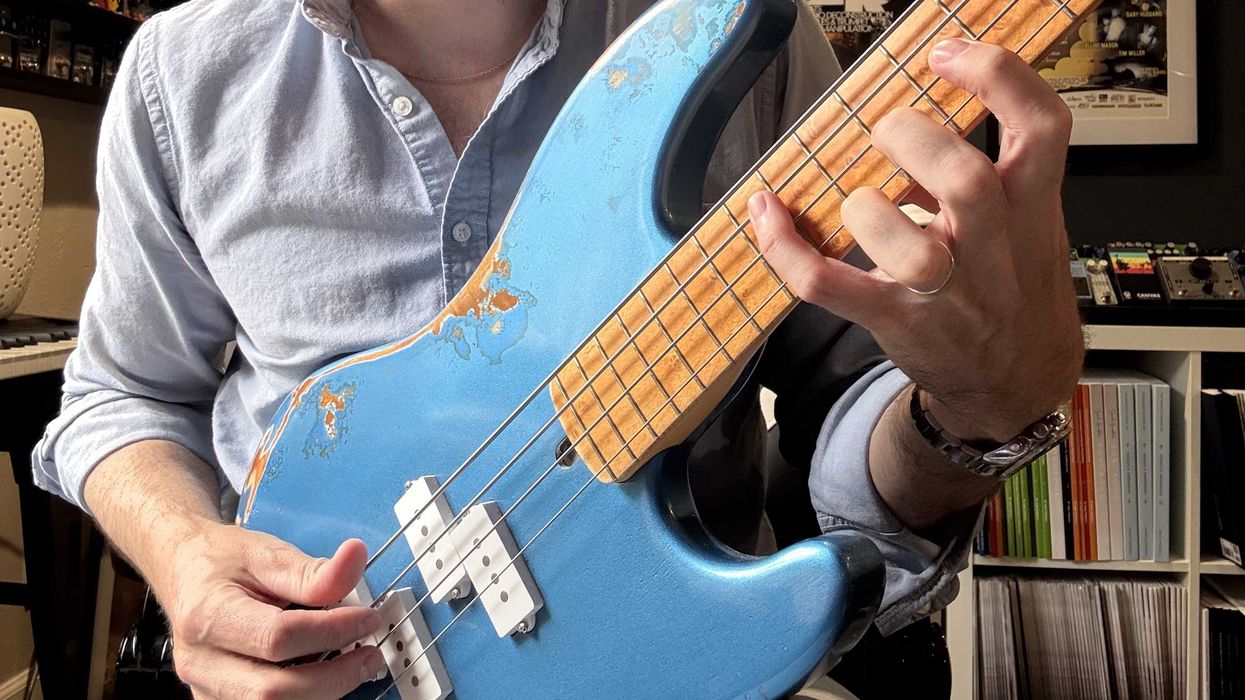 My first aid kit: Extra SIT strings, Dunlop 218 slide, Dunlop Victor capo,
toothpicks, 1/4" adaptor, Dunlop Picker’s Pouch, Planet Waves Pro-
Winder, spare fuses, and earplugs.
My first aid kit: Extra SIT strings, Dunlop 218 slide, Dunlop Victor capo,
toothpicks, 1/4" adaptor, Dunlop Picker’s Pouch, Planet Waves Pro-
Winder, spare fuses, and earplugs.You’re just starting to get into the music scene and you’ve landed your first good gig. Chances are you’re not going to have a guitar tech having just started out, so on the road, you need to be able to take care of gear emergencies on your own. When your gear fails in the middle of a song, you don’t even have the luxury of bad tone. In order to make sure your equipment is in top shape and can be fixed quickly if something takes a dive, I’m going to share a few tricks I’ve come up with on the fly—often in the middle of a show.
In my experience, a blown fuse is the most common culprit when my rig stops producing sound. Along with packing an essentials kit, I always make sure I have spare fuses. Because reviving your sound quickly is the most important task, taping spare fuses to the back of your amp will eliminate having to dig around in your bag of spare parts to find a replacement. Simply place a couple of fuses on the sticky side of a piece of gaffer tape and adhere the tape to the back panel of your amp. On the subject of fuses, I’ve heard some borderline-elitist-tone-smiths bicker back and forth about the direction a fuse should be installed. But after consulting several amp makers and my own ears, I’ve concluded that the direction the fuse is facing does not affect an amp’s tone.
When I’m about to go on tour, I also pack a Line 6 Pocket Pod. If a tube or fuse change doesn’t bring an amp back to life, plugging a Pocket Pod or similar product into a DI is a good way to finish out a set and troubleshoot your amp after the gig. And before hitting the road, I make sure the Pocket Pod is loaded with a batch of usable, core sounds by using the free Vyzex software. For tips on programming great sounds with any guitar-modeling software, check out my column called “The Beauty of DI” [November 2011].
Many of the shows I do require a high level of stage energy, and with that, another problem I’ve encountered is strap buttons coming loose or completely out of the guitar. I remember the first time my top strap button ripped out and I had to finish the song by holding the guitar with my forearm and hip! Thankfully, the singer’s solo-acoustic songs were next in the set, which gave me a little time to fix the problem. I quickly scanned the stage for something I could stuff into the screw cavity so the screw would have something to grab for threading. I ended up using a guitar pick to scoop out some drumstick shavings from the space between the hoop and bearing edge of the drummer’s snare drum. After cramming the shavings into the cavity and screwing the button back in, I had enough hold to get me through the rest of the show. Nowadays, I always pack toothpicks with my gear, should the situation arise again.
A friend of mine recently shared a story with a similar theme. He’s a world-class guitar tech and while changing strings on an acoustic guitar during a show, a black bridge pin slipped out of his hand and was swallowed by an unlit stage that was covered in black carpet. In a moment of fast thinking, he used his wire cutters to trim a long, thin section of wood from the actual stage, which was built out of plywood. His bridge-pinlike contraption saved the day by holding the string in place well enough to get the guitarist through the rest of the show.
Slides are another item that can be easily lost or broken. While I prefer Dunlop’s 218 glass slides, I also carry a Dunlop 222 steel slide—just in case something happens to my 218. In a pinch, I’ve used everything from beer and nail polish bottles, to shot glasses and glasshoused candles to play slide in situations where my actual slides had been compromised.
It’s a good idea to pack a “first aid kit” of all of your essential, guitar-playing tools before you head out to a show. I prefer to keep everything in clear makeup bags because I can see what’s inside without having to open it. The most valuable item in my kit? Earplugs. Wearing earplugs will help preserve your hearing so you can continue to accurately dial in great tones in your later years. Your ears are the devices that allow you to interpret timbral quality, so the biggest tone tip I could ever offer guitarists is reminding them to protect their hearing.
When gear breaks on the road, it can often turn out to be a blessing in disguise. The breakdowns force you to learn more about your equipment and how different components affect your tone. Try to use malfunctions as learning experiences. Being able to fix a problem quickly is as valuable a skill as being able to play well, so be sure to take the time to learn how to troubleshoot your gear before an onstage gear emergency forces you to do so.















